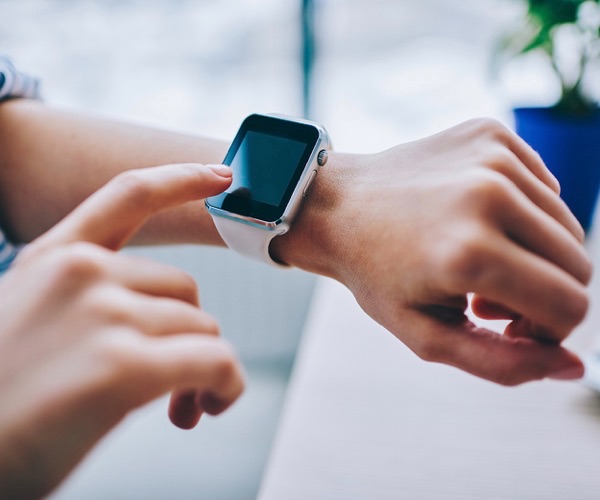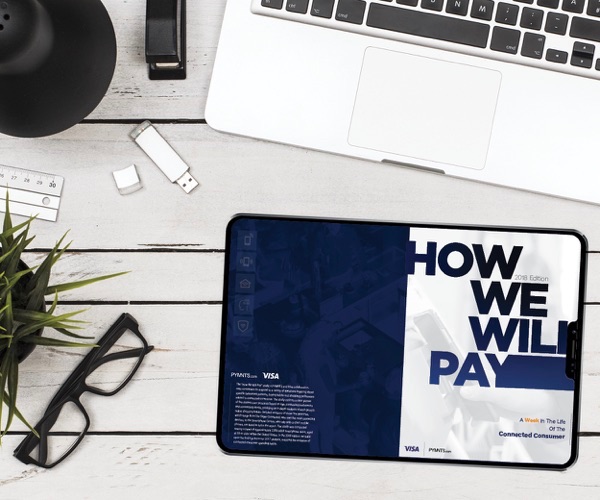The Big Sizzle: Winning Week For Wearables

It was a good week for wearables and their future, as the devices continued to show indications of strong promise on the B2C and B2B fronts. A sizzle in its own right – and also possibly a sizzle within a sizzle for payments and commerce players who may stand to see their boats lifted by wearables’ rising tide.
 On the B2C front, it looks like customer enthusiasm for wearable devices is both growing and expanding.
On the B2C front, it looks like customer enthusiasm for wearable devices is both growing and expanding.
According to new data from CCS Insight, the global wearables market will double in the next four years, hitting a value of $27 billion and 233 million units in sales.
Smartwatches lead the growth, according to the data, while market support for fitness trackers is beginning to soften, something that the PYMNTS How We Will Pay study also noted. The biggest decline in connected device ownership came at the hands of fitness trackers that were not capable of enabling commerce, which is now regarded by the connected consumer as a “must-have.”
According to the report, 85 million smartwatches are forecast to be sold next year, a figure that will hit 137 million by 2022. Fitness tracker sales are forecast to fall by 43 million units in 2018, and are predicted to fall to 39 million total units sold by 2022. CCS further notes that much of the growth in 2018 has been driven by Apple and its smartwatch product. The report further notes that consumers are more likely to engage with their wearables purchase for longer periods of time, reversing an early trend in wearable adoption that saw consumers abandoning their smartwatches soon after buying them.
The report adds that while smartwatches will grow, the real competition among wearables makers may be for consumers’ ear canals, as smart headphones and earbuds both see big upswings in units shipped.
Wearables also got a B2B showcase this week, with Samsung and HSBC rolling out S3 gear at the bank’s flagship Fifth Avenue location. The 12 watches in use through the end of December of this year are customized for banking use, designed to help bank employees be fully accessible to clients – and each other – throughout the large, three-story building.
“We can now really ask how humans and machines can work together to deliver a superior experience for both the employee and the customer,” HSBC Bank USA Head of Innovation Jeremy Balkin noted in the public announcement of the pilot.
The technology, fully secured by Samsung’s B2B security system, Knox, is functioned to stand alone on its own LTE network and be configured for a variety of functions geared toward smoother interbank operations: The tech allows the banks to shorten wait times, better manage customer expectations and gain clearer insight into real-time data, according to Balkin.
And, as an added bonus, employees thus far have also reported enjoying using the smartwatches, noting that they add a “James Bond” feeling to their jobs, according to Pablo Sanchez, HSBC North America senior executive VP and head of retail banking and wealth management.
The pilot will run through the end of the year, with the data being reviewed in the early part of 2019. The plan, HSBC and Samsung jointly confirmed in a press briefing, is envisioned for wider rollout in the U.S. and globally, though an official timeline has not been set.
For the sizzle of the week, wearables wins with solid B2C and B2B scores. But commerce also gets a sizzle within the sizzle this week – because, as shown in the PYMNTS/Visa How We Will Pay Deep Dive on Wearables, where wearables go, commerce follows.
In a wide variety of ways.
First, wearables owners buy more connected devices, having on average 5.5 connected devices compared to 3.2 for consumers who do not own wearables. Voice assistants are popular with wearables owners, with over 20 percent reporting having one as opposed to non-wearables, where smart speaker penetration is still under 10 percent. Wearables owners are also more likely to own smart appliances, smart thermostats and other smart accessories.
But while one might expect that customers who like connected wearable devices would also like other digital touchpoints, what is less expected is that wearables owners do more shopping in general. Across every category measured, they were more likely to have shopped it in the last week. The biggest differences were found in the categories of clothing apparel, personal care products, healthcare goods/medication, travel and pet supplies.
And though they shop in stores the majority of the time (with a strong online shopping presence), they are dedicated digital payers – around 28 percent of wearable device owners say they never use cash.
As the study notes, there is still a lot of room to grow. Consumers who use wearables don’t use them to shop or pay directly all that often, as not all wearables come equipped with payment capacities (though that has been changing over the last 12-18 months). As of 2017, less than 5 percent of wearables owners reported shopping directly from one.
And as wearables – and connected devices in general – become increasingly common in consumer and business applications over the next several years, that might be bound to change. The common complaint about trying to transact via smartwatch today is related to small screen size. As voice controls and AI assistant integration become more common across wearables – and navigability is less of an issue – much could change.
Wearables earned their sizzle this week with their march toward becoming common on more fronts. But for that really big sizzle, look for a tighter tie between the devices and payments and commerce, to better tap into the commerce enthusiasm of their wearers.
Sizzle
EMV SRC Spec: EMVCo debuted the version 0.9 release of the EMV Secure Remote Commerce (SRC) draft specification, and stakeholders will be able to comment on the standards before the first complete version debuts next year. The draft spec got a boost from Mastercard and Visa, which voiced their continued support. Upon implementation of the completed version, the spec would help establish a way for card payments to be made across digital platforms, websites and mobile means.
Financial Inclusion: The number of Americans without a bank account continues to fall, as the percentage comes to 6.5 percent, down from 7 percent in 2015 – the lowest level since the financial crisis. The improvement is tied to the strength of the economy, and the survey conducted by the FDIC also found an improvement in the “underbanked” rate, which was 18.7 percent last year, 1.2 percent better than seen in 2015.
P2P Payments: P2P for you and me. PayPal and Venmo are gaining traction, as Zelle saw 15 percent growth quarter over quarter to 116 million transactions in Q3, worth $32 billion. Venmo’s volume was up 78 percent year on year, and was $17 billion in the period.
Fizzle
Wells Fargo: Scandals, scandals everywhere, it seems, and in the latest news, the company placed its chief administrative officer and chief auditor on leave in the wake of a retail banking sales scandal. The execs had been suspended at the request of the Office of the Comptroller of the Currency. Separately, the company agreed to a $65 million fine with the New York State AG over misleading investors about cross-selling tactics.
Risky Loans: Echoes of the financial crisis looming? Collateralized loan obligations are on the rise, lending standards are loose and the loans are going to high-risk companies. These loans to “junk level” companies stand in the hundreds of billions of dollars.
Slow Phones: Deliberately slow phones? Apple and Samsung got fined in Italy — a respective $11 million and $5 million — as “planned obsolescence” via software updates rendered older models unusable and forced consumers to upgrade their devices.

